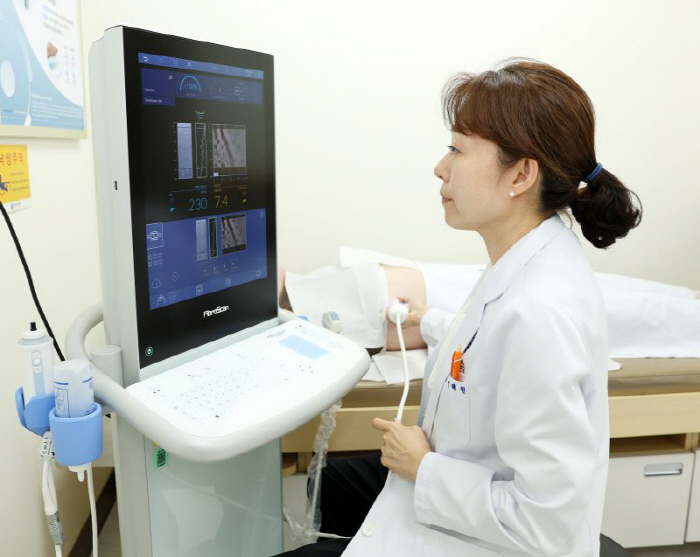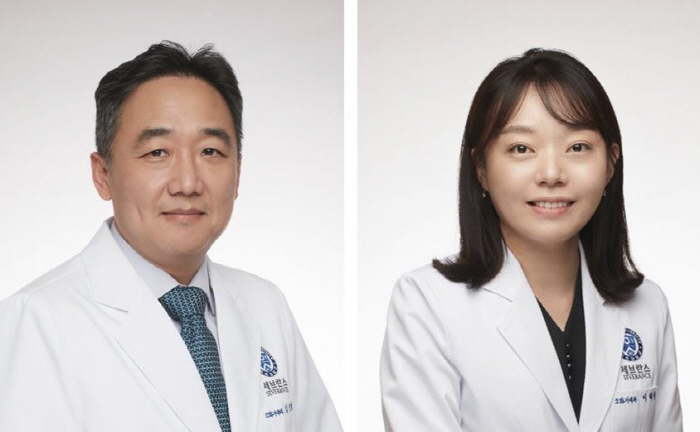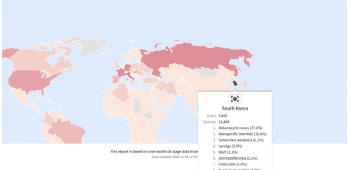Verification of the prediction model for the risk of metabolic abnormal fatty liver disease, non-invasive liver cancer...93% accuracy
Aug 11, 2025
|
A research team led by Kim Seung-up and Lee Hye-won at Severance Hospital's liver center announced on the 11th that it has demonstrated the clinical effectiveness of a two-stage non-invasive evaluation strategy to measure the risk of hepatocellular carcinoma in patients with metabolic abnormalities in 16 institutions in the United States, Europe, and Asia, including Hong Kong Chinese University.
The results of the study were published in the latest issue of the international academic journal Gut (IF 25.8).
Metabolic fatty liver disease is a disease caused by the accumulation of fat in the liver even if you hardly drink alcohol, and it is a very common disease that appears in about 30% of the world's population. In the past, it was called 'non-alcoholic fatty liver (NAFLD)', but recently it is newly established as 'metabolic fatty liver disease' in that it is closely related to metabolic diseases such as diabetes, high blood pressure, and obesity.
The research team verified a model that can select patients with a high risk of severe complications such as liver cancer in a non-invasive way. In accordance with the guidelines of the American Liver Association, a two-step strategy was applied to first calculate the fibrosis index 'FIB-4' through blood tests, and then further implement a vibration control ultrasound elastometry (VCTE) to measure the stiffness of the liver.
A total of 12,950 patients with metabolic abnormal fatty liver disease were followed for an average of 47 months, and if the FIB-4 was more than 3.25 or the liver stiffness measured by vibration-controlled ultrasound elastography was more than 20 kPa, the annual incidence of liver cancer exceeded 1%, meeting the criteria for monitoring. In addition, patients with a high FIB-4 and a cirrhosis of 15 kPa or higher were also classified as high-risk groups regardless of cirrhosis.
On the other hand, when FIB-4 was high but the cirrhosis was low, the incidence of liver cancer within 3 years was less than 0.3%, confirming the possibility of exclusion from surveillance.
The strategy also achieved high clinical reliability, recording AUROC 0.733 as an indicator for evaluating prediction accuracy, positive prediction of 7.9%, negative prediction of 99.7%, and overall accuracy of 93%.
Professor Kim Seung-up said, "This study is significant in that it presents a realistic and simple clinical strategy to predict disease progression in patients with metabolic abnormal fatty liver disease. The two-stage approach can complement the limitations of existing liver cancer surveillance strategies in that it is applicable with or without cirrhosis."
Professor Lee Hye-won said "Considering that liver cancer can occur without cirrhosis in patients with metabolic abnormal fatty liver disease, a practical contribution to the establishment of a patient-specific monitoring system is expected."The strategy verified this time is a precise strategy that allows high-risk groups to be excluded from unnecessary inspections without missing high-risk groups."
|
This article was translated by Naver AI translator.















